
It is not difficult for a sighted person to imagine how being blind or visually impaired could make using a computer difficult. Just close your eyes and you will instantly experience that even processing text is impossible – or impossible without additional software at least. Now a range of software is available that can help to make using a computer an easier, more enjoyable and more productive experience for blind or visually impaired users.
For in-depth insights on accessibility, we recommend the online course on Accessibility at the Interaction Design Foundation.
Essential Software: A Screen Reader
A screen reader is an essential piece of software for a blind or visually impaired person. Simply put, a screen reader transmits whatever text is displayed on the computer screen into a form that a visually impaired user can process (usually tactile, auditory or a combination of both). While the most basic screen readers will not help blind users navigate a computer, those with additional features can give people with visual impairment much more independence.
Whilst most screen readers work by having a synthetic voice that reads text aloud, others can also communicate data via a refreshable braille display. Such screen readers make use of crystals that can expand when exposed to particular voltage levels (thanks to a phenomenon known as the Piezo Effect), allowing visually impaired users to use their fingers to read the text that is displayed on screen. But while screen-reading software can be affordable, such hardware is usually very expensive.
Free Software Makes ‘Universal’ Access a Reality
Many people could not afford the expensive price tag associated with some of the more sophisticated screen readers. Luckily for them, there are several screen reading software that are completely free. The following is a list of free screen readers that one can download:
-
NVDA (Windows)
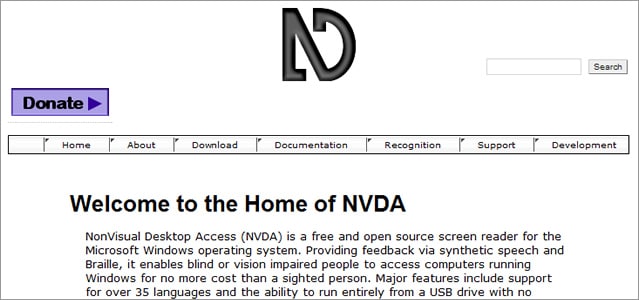
NVDA has been designed by a blind software engineering graduate, James Teh, for use with Windows computers. This free and open source screen reader has a synthetic voice that reads whatever the cursor hovers over, and can be used directly from a USB stick, making it ideal for students. -
Serotek System Access (Windows)
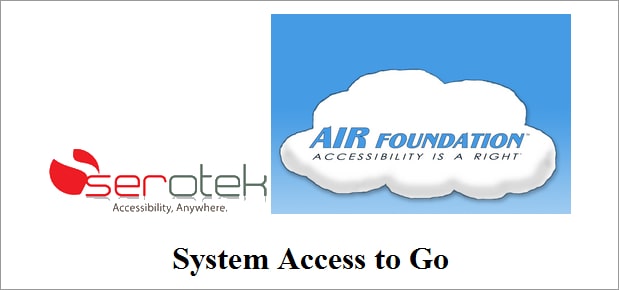
This downloadable and complete screen reader can be used even outside your browser, thus making it one of the quickest ways of getting a screen reader up and running on your system. Serotek offers extended versions for a fee, although it is much cheaper than other screen readers. -
Apple VoiceOver (OS X)
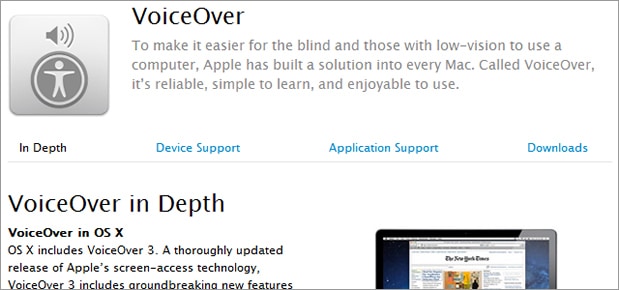
Apple VoiceOver includes options to magnify, keyboard control and verbal descriptions in English to describe what is happening on screen. It also reads aloud file content as well as web pages, E-mail messages and word processing files whilst providing a relatively accurate narrative of the user’s workspace. This covers a wide array of keyboard commands that enable user navigation of the Mac OS X interface. -
ORCA (Linux)
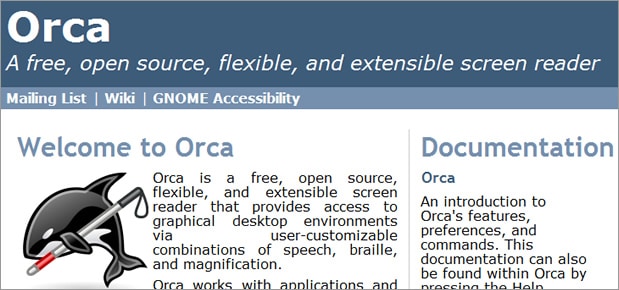
ORCA is a Linux based screen reader which has also been evolving for the past number of years. Although it is not the sole Linux-based screen reader, ORCA is definitely the most popular. Recently it has been included with the Ubuntu installation CD, and with a couple of initial key presses it allows blind people to have audible interaction during the installation process. -
BRLTTY (Linux)
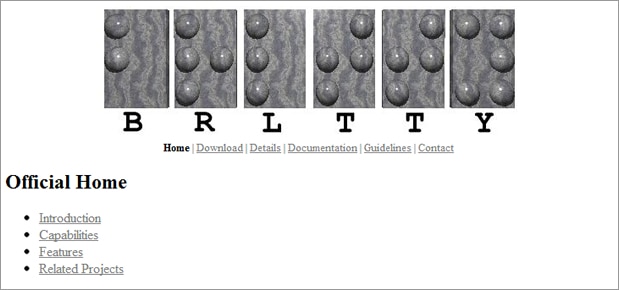
BRLTTY is a background process (daemon) which provides access to the Linux/Unix console (when in text mode) for a blind person using a refreshable braille display. It drives the braille display, and provides complete screen review functionality. Some speech capability has also been incorporated. -
Emacspeak (Linux)
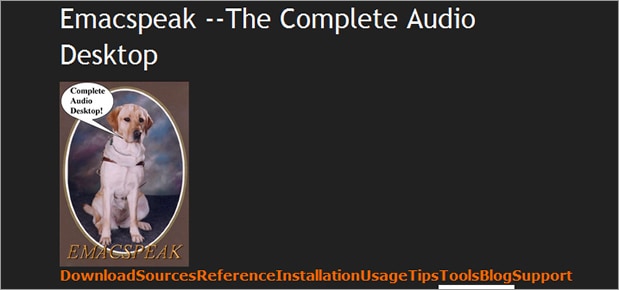
Emacspeak is a free speech interface and that allows visually impaired users to interact independently and efficiently with the computer. Its technology enables it to produce rich aural representation of electronic information. Emacspeak offers audible interface of the different aspects of the Internet such as browsing and messaging as well as local and remote information via a consistent and well-integrated user interface. -
WebAnywhere (All OSs, Web browsers)
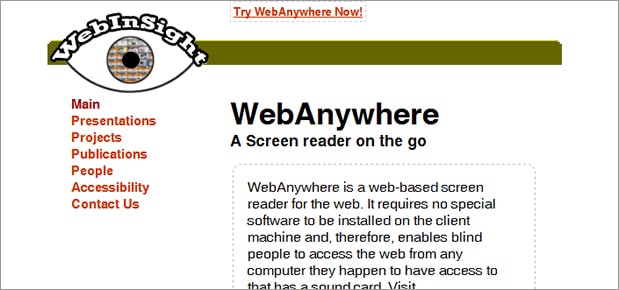
WebAnywhere is a web-based screen reader for the web. It requires no special software to be installed on the client machine and, therefore, enables blind people to access the web from any computer they happen to have access to that has a sound card -
Spoken Web (Internet Explorer)
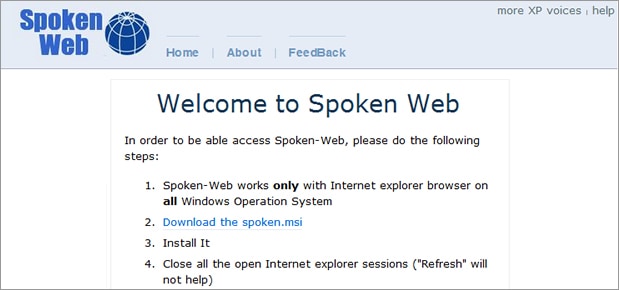
Spoken-Web is a Web portal, managing a wide range of online data-intensive content like news updates, weather, travel and business articles for computer users who are blind or visually impaired. The site provides a simple, easy-to-use interface for navigating between the different sections and articles. Using the keyboard to navigate, a person who is blind or who has a visual impairment can hear the full range of an article content provided in a logical, clear, and understandable manner. -
ChromeVox (Google Chrome)
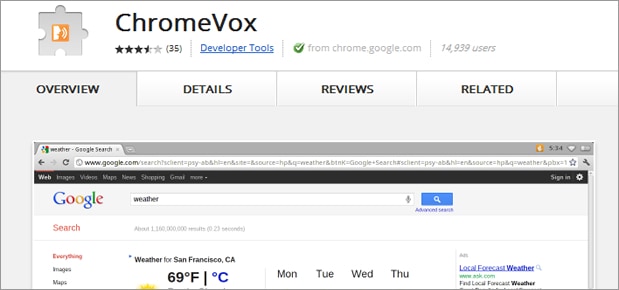
Google ChromeVox is a Google Chrome screen reader extension for visually impaired users. -
ChromeVis (Google Chrome)
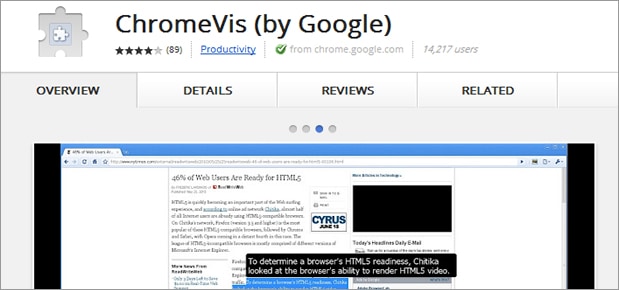
Google ChromeVis is a Google Chrome extension that magnifies any selected text on a webpage. The magnified text is displayed inside of a separate lens and preserves the original page layout. Users can change both the lens text color and the lens background color.
Software for Work and Play
Such software is essential for blind users to read the content of web pages or communicate with friends and colleagues. As more sophisticated software has been made available to a larger audience, people have begun turning their attention to developing leisure programs that are designed with accessibility in mind. For example, the website blindsoftware.com has an accessible mp3 player to download and a selection of games.
Developing Software for Everyone
When it comes to universal access, several people with hearing or visual impairments or illnesses have found that it can become a barrier to using traditional software. The goal is to remove those perceived barriers and help them be able to achieve results beyond their imagination. This is why it is important that developers continue to work on making software as accessible as they can for a wide range of people, so everyone can benefit from the powerful tools computers offer.
Want to learn more?
If you’d like to brush up on Accessibility and get practical skills on the subject, then consider to take the online course on Accessibility. If, on the other hand, you want to go over the basics of UX and Usability, you could take the online course on User Experience. Good luck on your learning journey!
(Lead image: Depositphotos)
